Food retailers play an important role in communities, serving as major employers and anchor institutions. But local chains are facing challenges from market consolidation, new competitors, and new technologies that threaten to alter business operations and replace workers. Some stores are finding ways to differentiate and improve business performance by investing in workers – which helps them create exceptional customer service and cater to local communities. Research by the National Grocers Association, the trade association for independent supermarkets, indicates that more than 80 percent of consumers still prefer their local store to an online alternative, and they value local, quality items and friendly staff.
This event explores how grocers can succeed – and can advance economic and racial equity – by investing in workers. Bringing together food access advocates, food retail leaders, and workforce development experts, we discuss what consumers, business owners, and policymakers can do to encourage good working conditions for the people behind our groceries.
Running a company with job quality in mind is good business, and a metric for quality jobs could improve decisions about where to invest, whom to lend to, and which companies to do business with. However, until now, there was no easy and consistent way to measure a businesses’ “people outcomes” and benchmark to industry peers.
In 2018, the Economic Opportunities Program’s Good Companies/Good Jobs Initiative, in partnership with Working Metrics, unveiled a new tool that assesses businesses’ job quality performance for frontline workers and benchmarks them against others. This tool is part of a unique nonprofit-for profit collaboration with Working Metrics to get this tool into the hands of investors and businesses’ procurement systems to help them include firms’ treatment of workers in their decision making – thereby creating strong incentives for business change.
This Working in America event includes a presentation on this tool and discussion with businesses who contributed to it and used it to improve their practices.
Throughout history, courts have played a key role in interpreting and enforcing the rules that govern work, balancing the rights and interests of workers and those of the companies they work for. How courts strike that balance has changed over the years and has influenced the continuing evolution of the relationship between workers and employers.
In this event, we hear from legal and economic scholars and worker advocates about the critical role that courts have in setting the rules for the employer-employee relationship and the impact these decisions can have on individuals and the economy.
The Aspen Institute Economic Opportunities Program, together with the Rockefeller Foundation, brought together a set of experts and individuals leading work in states and communities to discuss ways in which Opportunity Fund investments could finance ESOP conversion opportunities, and develop ideas to include employee share ownership within an Opportunity Zone’s inclusive economic development strategy in general. Based on the day’s discussion, the Economic Opportunities Program drafted a memo on how employee share ownership could contribute to the expansion of economic opportunity within Qualified Opportunity Zones and summarizes key issues regarding how to align the mechanics of investing in ESOP conversions with the regulatory framework governing Opportunity Fund investments.
This op-ed discusses how employee ownership offers a promising path forward to help the US address wealth inequality.
In July 2017, the Aspen Institute convened its second annual Economic Security Summit, “Reconnecting Work and Wealth: Constructing a New American Middle Class.” Where a cross-section of leaders from industry, academia, philanthropy, government, and nonprofit organizations grappled with how to restore widespread economic prosperity to families and communities all across America. This report captures the ideas that emerged as participants debated factors contributing to the growing economic divide, what inequality means for our democracy, and potential opportunities to strengthen family economic security and upward mobility in the 21st century.
This guidebook offers an equity-based approach to research to strengthen the quality and authenticity of information used to drive decision-making. The guide addresses existing power dynamics and unintended biases in the creation of research and focuses on community members as authors and owners of information. In addition to describing seven inequities and opportunities for change in the research process, this resource provides guidance for community organizations, researchers, and funders. This resource may be particularly useful to individuals and organizations interested in centering input from community organizations, community members, and/or workers to inform job quality strategies.
This case study of a company in Milwaukee is part of an Equity in Apprenticeship series highlighting programs that use apprenticeship to extend career opportunities to historically marginalized groups. Employers and practitioners can glean lessons related to achieving equitable outcomes through apprenticeship programs.
This report details the findings of a stable scheduling study conducted at Gap stores by an interdisciplinary team of academics. During the pilot study, stores in San Francisco and Chicago implemented stable scheduling practices, including two-week advance notice, elimination of on-call scheduling, tech-enabled shift swapping, and targeted additional staffing. Findings included a 7% increase in median sales and 5% increase in labor productivity at treatment stores. This study’s findings help to demonstrate the potential business benefits of stable scheduling.
This step-by-step guide by Upskill America, an initiative of the Economic Opportunities Program, and the Institute for Corporate Productivity details the steps to change an organization’s tuition assistance program to a tuition disbursement program, providing financial support for education up-front rather than offering reimbursement after a worker has completed a program. This simple change to the structure of a tuition assistance program has important job quality and equity implications; it can make education and upskilling accessible to workers who are eager to learn but lack access to resources to pay for school. This tool is useful for employers and all practitioners who work with them to strengthen job quality.
